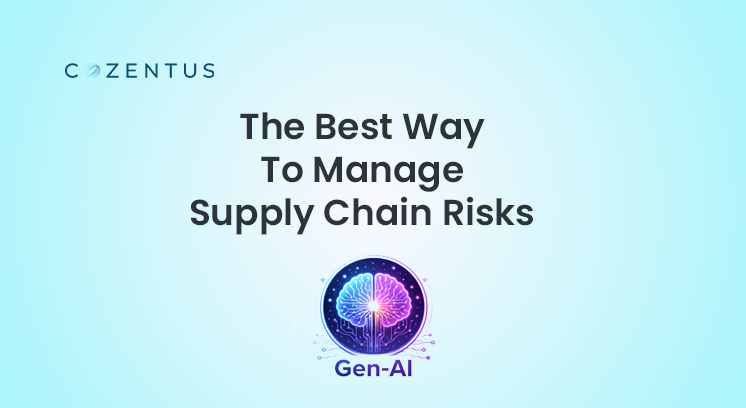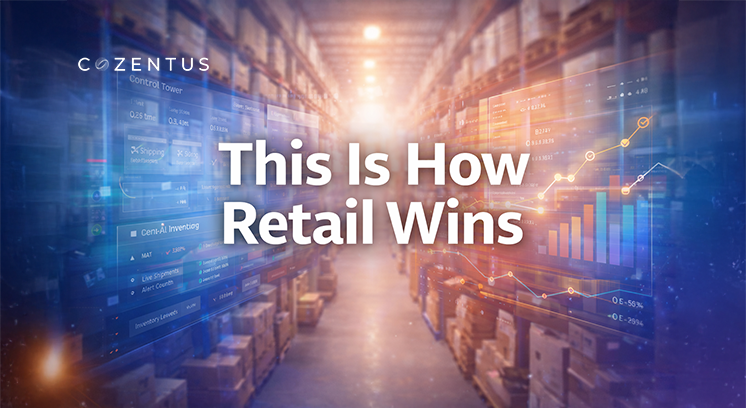In today's fast-paced world, transportation is crucial in ensuring that goods and products are delivered efficiently and on time. However, with the increasing demand for faster and more reliable transportation, adopting advanced technologies to optimise the supply chain has become essential. One of these technologies is Predictive Analysis, which provides insights into future events and trends, enabling organisations to anticipate potential issues and proactively take measures to avoid them.
Supply chain management solutions have increasingly adopted predictive analysis techniques to optimise transportation operations. This article explores the benefits and importance of predictive analysis in transportation and how it can be used to create efficient supply chain management software solutions.
What is Predictive Analysis in Transportation?
Predictive analysis is a technique that involves the use of data, statistical algorithms, and machine learning techniques to identify patterns and make predictions about future events. In transportation, predictive analysis can forecast the demand for transportation services, identify potential disruptions in the supply chain, and optimise routes and schedules.
For instance, predictive analysis can help transportation companies identify the most efficient delivery route based on traffic, weather conditions, and road closures. It can help reduce transportation costs and improve delivery times, increasing customer satisfaction.
Benefits of Predictive Analysis in Transportation
Improved Efficiency: Predictive analysis can help transportation companies optimise operations, reducing transportation costs and increasing efficiency. By identifying potential issues before they occur, companies can take measures to avoid them, saving time and resources.
Better Decision-Making: Predictive analysis provides valuable insights into future events, allowing transportation companies to make informed decisions. By analysing data, companies can identify patterns and trends, enabling them to make better decisions about routes, schedules, and other transportation-related issues.
Increased Customer Satisfaction: Predictive analysis can help transportation companies provide better customer service by ensuring that deliveries are made on time and in the most efficient manner possible. It can help increase customer satisfaction and loyalty, leading to increased revenue.
Improved Safety: Predictive analysis can also be used to improve safety in transportation. By identifying potential hazards and risks, companies can take measures to avoid accidents and ensure the safety of their employees and customers.
Supply Chain Management Software Solutions
Supply chain management software solutions are designed to help organisations manage their supply chain operations efficiently. These solutions can be customised to meet an organisation's specific needs, providing real-time visibility into the supply chain and enabling proactive decision-making.
Predictive analysis is a crucial component of supply chain management software solutions, providing insights into future events and enabling organisations to take proactive measures to optimise their operations.
By integrating predictive analytics into their supply chain management software solutions, organisations can:
Improve Forecasting: Predictive analysis can help organisations improve their forecasting accuracy, plan for future demand, and optimise their operations accordingly.
Reduce Costs: By identifying potential issues before they occur, organisations can take measures to avoid them, reducing costs and increasing efficiency.
Improve Customer Service: Predictive analysis can help organisations provide better customer service by ensuring that deliveries are made on time and in the most efficient manner possible.
Increase Revenue: By improving efficiency and customer service, organisations can increase revenue and gain a competitive advantage in the market.
Statistics on Predictive Analysis in Transportation
According to a report by MarketsandMarkets, the global predictive analytics market is expected to grow from USD 4.56 billion in 2017 to USD 12.41 billion by 2022, at a CAGR of 22.1% during the forecast period. This growth is attributed to the increasing demand for advanced analytics technologies, such as predictive analytics, in various industries, including transportation and logistics.
Another report by Gartner predicts that predictive analytics will be one of the top technology trends for supply chain management in the coming years. The report suggests that predictive analytics will be used to optimise various aspects of the supply chain, including transportation, inventory management, and demand forecasting.
In addition, a survey conducted by DHL found that 79% of logistics companies believe that predictive analytics will be crucial to their success in the next five years. The survey also found that 87% of logistics companies plan to invest in predictive analytics in the next two years.
Bottom Line
Predictive analysis is a powerful tool to help transportation companies and supply chain management software solutions optimise operations, reduce costs, and improve customer service. By analysing data and identifying patterns, predictive analysis can help organisations anticipate and proactively avoid potential issues.
As the demand for faster and more efficient transportation continues to grow, the importance of predictive analytics in transportation and supply chain management will only increase. Organisations that adopt predictive analysis technologies will be better equipped to optimise their operations, increase efficiency, and gain a competitive advantage in the market.
If you are looking for advanced predictive analysis solutions to optimise your transportation and supply chain operations, Cozentus can help. Contact us today to learn more.
Recent Post
Subscribe to our newsletter
Stay updated on latest trends and news in the supply chain and logistics industry








